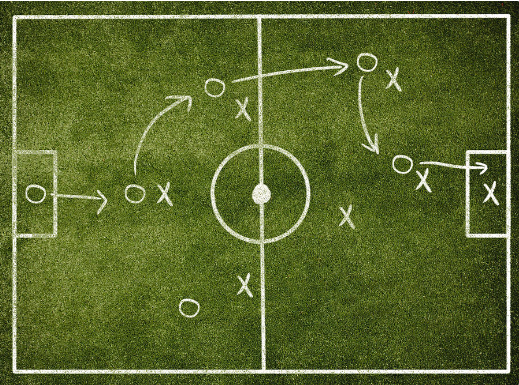If you look at the Digital spectrum from a bird’s-eye view, you see the trifecta of Technology, Design and Content at its core. Technology is at one end; a moving target being chased. Content is flung to the far side; an afterthought. And in the middle is Design; required but not revered.
What do users want?
The concern with this approach is that when Technology is upheld over all else, users don’t connect with products and services. The human touch is what they seek in every interaction and experience be it in the physical or virtual world. This is the only common connector across generations of users. Factors like speed and intuitiveness also matter a lot but they tend to vary based on the user’s ease with technology.
While Gen Z and Gen Alpha users prefer instant, Gen X and Millennial users might settle for reasonable turnaround. Convenience is a basic requirement across the board from smartphone, tablet, laptop, desktop to human.
‘Ways of Seeing’ what users want
When users feel disconnected with products, it is because the brands have not invested in aspects that mean the most to them. And this is true for many digital products where we often see a lot of bias in the design stemming from designers, developers and the business owners.
This approach is a far cry from the methods adopted by designers of the past who are pioneers, practitioners and purveyors of Design Thinking centered around humans.
Henry Dreyfuss, the Industrial Designer who can be credited for bringing “customers delight” with his astounding inventions – the refrigerator, vacuum cleaner, thermostat alarm clock, typewriter, tractor and steamship to name a few, clearly understood human needs and wants even before most humans did. He built products in the pre-technology age from the ground up and treated human physicality, characteristics and behaviour as his North Star to help guide his process.
Timeless insight from the indisputable Designer of the People –
“It must be borne in mind that the object being worked on is going to be ridden in, sat upon, looked at, talked into, activated, operated, or in some way used by people individually or en masse. If the point of contact between the product and the people becomes a point of friction, then the designer has failed. If, on the other hand, people are made safer, more comfortable, more desirous of purchase, more efficient – or just plain happier – by contact with the product, then the designer has succeeded.”
In the times of Henry Dreyfuss (early 1920 to 1972), the discovery process was slow and options were non-existent; people were loyal users of these products mainly because they provided great value with zero friction. But also in large part because they were one of a kind. In the 21st century, no market has a single product. Customer loyalty is seen where the products may have had First Mover Advantage but if better options become available, people are likely to take their loyalties elsewhere. This is why digital products that deliver on providing the best user experience also meet consumer expectations which may be high but also very real.
When speaking of what makes Good UX you can’t help but recall the timeless inputs provided by a man who is called the Father of UX for very good reason.
Don Norman is synonymous with User Experience and needs no introduction.His research and observations have guided the making of pioneering products like Apple and HP that have enjoyed never-before-seen customer loyalty due to great experiences. A lot can be said about the counter-intuitive nature of these products when they were originally introduced, but with time and use, customers wanted nothing else in their respective market segments.
In his book The Design of Everyday Things, Don provides a lot of clarity on how design is perceived.
“People need some way of understanding the product or service they wish to use, some sign of what it is for, what is happening, and what the alternative actions are. People search for clues, for any sign that might help them cope and understand. It is the sign that is important, anything that might signify meaningful information. Designers need to provide these clues. What people need, and what designers must provide, are signifiers. For us to function in this social, technological world, we need to develop internal models of what things mean, of how they operate.We seek all the clues we can find to help in this enterprise, and in this way, we are detectives, searching for whatever guidance we might find. If we are fortunate, thoughtful designers provide the clues for us. Otherwise, we must use our own creativity and imagination.”
The challenge today is using new technology purposefully to make the customer experience more human. In keeping pace with advancements, product managers often forget what works for User Experience today is inherently the same principles of the early 20th century. But with time and use of technology, we have better insights into how humans interact and experience digital.
This is well-demonstrated in Steve Kruger’s book Don’t Make Me Think, Revisited: A Common Sense Approach to Web and Mobile Usability
A bible of sorts for those seeking research-backed facts on how people interact with Web and Mobile.
A chapter in this book talks of How we really use the Web – scanning, satisficing and muddling through. Excerpts from the chapter on satisficing and muddling through.
FACT OF LIFE #2:
We don’t make optimal choices.
We satisfice.
When we’re designing pages, we tend to assume that users will scan the page, consider all of the available options, and choose the best one. In reality, though, most of the time we don’t choose the best option – we choose the first reasonable option, a strategy known as satisficing. As soon as we find a link that seems like it might lead to what we’re looking for, there’s a very good chance that we’ll click it.
Economist Herbert Simon coined the term satisficing (a cross between satisfying and sufficing)
FACT OF LIFE #3:
We don’t figure out how things work.
We muddle through.
Many people use the Web extensively without knowing that they’re using a browser. What they know is you type something in a box and stuff appears. But it doesn’t matter to them: They’re muddling through and using the thing successfully. And muddling through is not limited to beginners. Even technically savvy users often have surprising gaps in their understanding of how things work. (I wouldn’t be surprised if even Mark Zuckerberg and Sergey Brin have some bits of technology in their lives that they use by muddling through.)
This highlights the user’s approach to finding something on the web. It isn’t accurate but humanly flawed and that is most important to understand.
It is evident from these expert inputs that design has an important role to play in creating a good user experience. One that minimizes friction, maximizes speed and convenience, all along retaining the human element. It has a tangible and measurable impact on Customer Experience which if botched, will most likely be a deal breaker.



